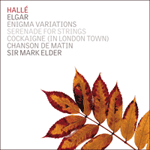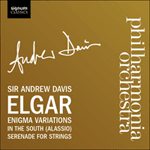
Welcome to Hyperion Records, an independent British classical label devoted to presenting high-quality recordings of music of all styles and from all periods from the twelfth century to the twenty-first.
Hyperion offers both CDs, and downloads in a number of formats. The site is also available in several languages.
Please use the dropdown buttons to set your preferred options, or use the checkbox to accept the defaults.

 PERFORMANCE
PERFORMANCE RECORDING
RECORDINGThe Serenade was first privately performed by the Worcester Ladies’ Orchestral Class, a group Elgar was involved in training, but had to wait a further three years for a first complete public performance, in Antwerp, 1896. Ever close to his heart, it was one of the final works Elgar recorded for the gramophone in 1933, the year before his death.
from notes by M Ross © 2008
extrait des notes rédigées par Michael Kennedy © 2003
Français: David Ylla-Somers
aus dem Begleittext von Michael Kennedy © 2003
Deutsch: Anne Steeb/Bernd Müller
 Elgar: Enigma Variations & other works Elgar: Enigma Variations & other works‘Mark Elder is making something of a name for himself as an Elgarian, and is in the best of possible places to do so’ (MusicWeb International)» More |
 Elgar: Enigma Variations, In the South & Serenade for strings Elgar: Enigma Variations, In the South & Serenade for stringsThis album features Elgar’s best-known orchestral works: the 'Enigma' Variations depicting twelve of Elgar’s family and friends in fourteen variations, the Serenade for strings, and 'In the South', a Concert Overture written for the Elgar festival ...» More |

